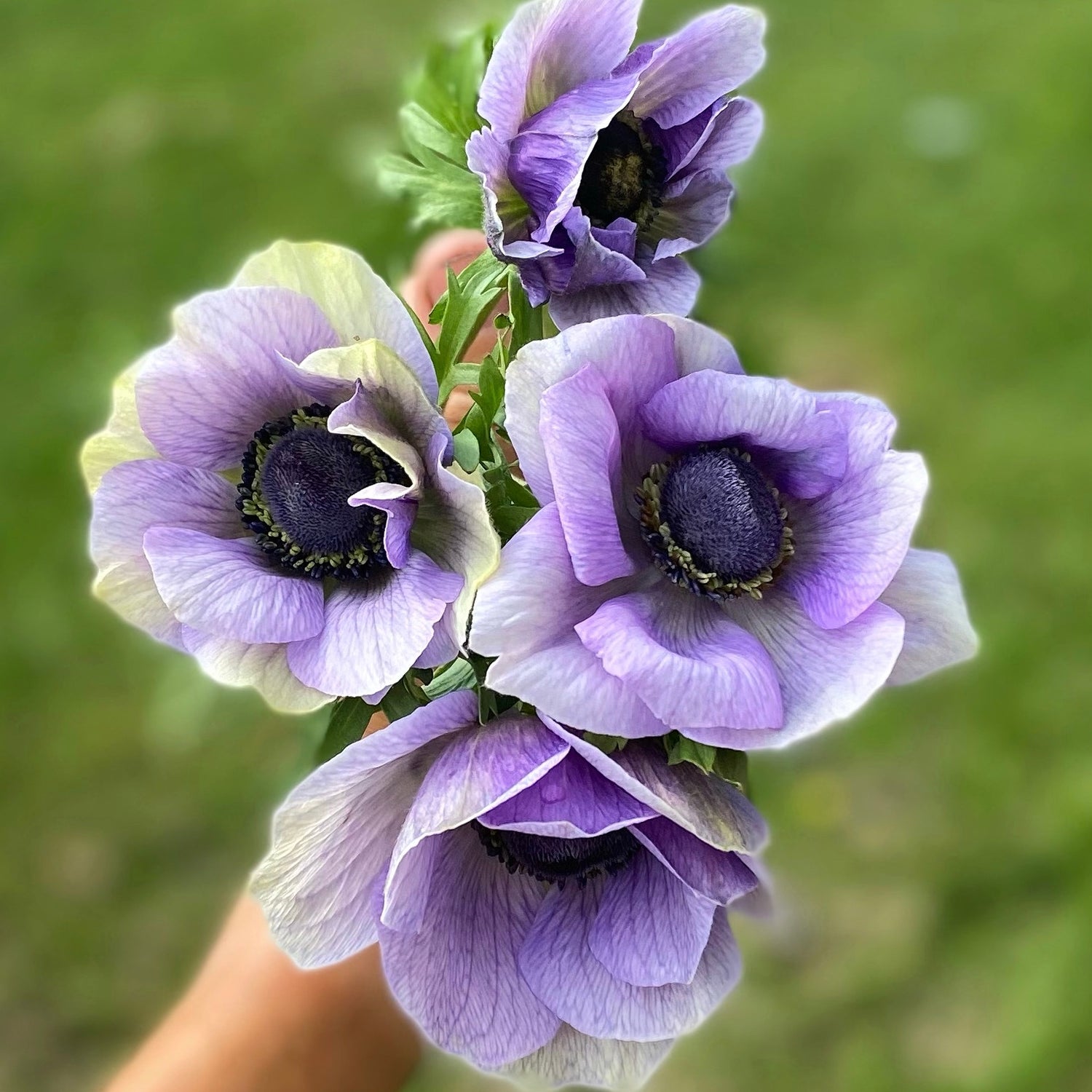Hatching Egg Info
Thank you for your interest in purchasing eggs from my flock. Here's some more detailed info on my flock and the egg colours they lay or carry. All of my chickens are very friendly and not aggressive, I don't keep mean birds in my flock, in the hopes they pass on those genes to their offspring.
There is a chance that some standard size hens will have been bred by a bantam rooster, so the resulting offspring will be mid-sized. Please know that the egg colour that you hatch, does not guarantee that egg colour will be laid the offspring. Please refer to the chart below for possible offspring egg-laying combinations.
Hens (Egg Colour)
- Ameraucana: Chocolate, Mauve, Splash, Wheaten (blue)
- Barred Rock (light pink/light brown)
- Barnyard Mix (various)
- Buff Brahma (cream)
- Buttercup (white)
- Easter Egger (blue/green/mint)
- Erminette (white)
- ISA Brown (brown)
- Legbar: Cream (blue)
- Leghorn: Isabella (white)
- Marans: Black Copper, Blue, Blue Copper, Lavender (dark/chocolate brown)
- Mosaic (white)
- Olive Egger (green; various shades, some speckled)
- Orpingtons: Buff, Cuckoo Lavender, Lavender (cream/beige)
- Speckled Sussex (light beige)
- Welsummer (dark brown speckled)
- Wyandotte: Silver Laced (beige)
- Salmon Faverolles: (brown/pink)
- Serama (white)
- Silkies: Partridge, White, Splash (cream/white)
- Silkie x Cochin: (cream/white)
- Bantam Cochin: Black Silver Birchen, Chocolate (cream/white)
- Bantam Easter Egger (mint/blue)
- Bantam Frizzle (white)
Roosters
- Ameraucana: Splash (blue egg)
- Barnyard Mix (unknown)
- Orpington: Lavender (beige)
- Welsummer: (dark brown speckled)
- Silkies: Splash, Black (white)
- Serama (white)
There is a very small possibility of purebred Orpingtons, Silkies, Ameraucanas, and Seramas. Almost all of these hatching eggs will result in really unique, amazing backyard mixes to add to your own flock!




SHIPPING
I am willing to ship hatching eggs as the weather cooperates, and if you are willing to accept the risks of receiving hatching eggs shipped in the mail. I have purchased hatching eggs many times over the years, and sometimes Canada Post is best, other times couriers are best. I will ship your eggs with each egg wrapped in plastic bubble wrap, pointy end down and well padded in a shipping box. The rest is up to the postal service, and your care of the eggs upon receiving them.
Your hatching eggs will be packed with the utmost care and delivered by Canada Post or UPS. Only the fastest shipping options will be available so you get them quickly; I highly recommend to pay more for Xpresspost if you live farther east than Saskatchewan. I will ship Monday or Tuesday to ensure arrival before the weekend and upgrade to UPS for free if it’s faster. If you DO NOT want UPS to ship to you, please email me after your order is placed.
Seldom but occasionally, regardless of how carefully your eggs are packed, packages are mishandled and delicate eggs arrive broken. I will always include an extra eggs to compensate for the possibility of breakage.
The eggs you receive will be from 1 to 5 days old. If your eggs must be stored for more than the 24 hours period, you can extend their shelf life by keeping them at a cool 7 - 12 degrees Celcius, and turning them 3 times daily until incubation begins. Hatching eggs should be placed in your incubator within a day of delivery for best results.
Purchasing shipped fertile hatching eggs is a risk! NO REFUNDS OR RETURNS ARE AVAILABLE AT ANY TIME.
Sarah's Cut Flowers in no way guarantees your hatching egg success. There are many variables involved with the success or failure of your incubation experience. Unsuccessful hatches can and do happen, trust me, I know from experience.
Some of the possible causes of unsuccessful hatches are:
- Damage from mishandled packages in shipping
- Exposure of the eggs to extreme temperature/pressure/x-ray
- Inexperience with incubation/failure to prepare/improper technique
- Faulty incubators
- Incorrect incubator temperatures and/or humidity levels
- Improper storage of eggs once received (not allowing your eggs to rest before putting them into the incubator)
- Improper cleaning of the incubator prior to starting incubation (this may allow bacteria to form and contaminate your eggs)
Please remember that you are not paying for chicks. You are paying for fresh, fertile eggs. Average hatch rates for shipped hatching eggs are around 45-50%, these are only averages, and are considered GOOD. All of these things are generally understood by seasoned buyers of hatching eggs. I don't want you to be disappointed in any way with your purchase, so I want you to be very aware of the risks of your purchase. It helps to understand what to reasonably expect and accept the fact that from time to time hatches are unsuccessful, even for the experienced.
TIPS FOR HATCHING SUCCESS
- Allow eggs to rest, pointy end down, for at least 12-24 hours after receiving them. This will allow the air cell to settle and re-attach.
- Warm up your incubator and let run for 24 hours. For my incubator and climate, I aim for a temperature of 99.5 F and humidity of 45% for the first 18 days.
- Use a secondary thermometer/hygrometer. I highly recommend this Govee brand one (affiliate).
- Candle eggs before setting them. It's best to candle before you set them to ensure there aren't any hairline cracks from transport.
- Shipped eggs: do not touch for 3 days. Once you set your eggs, if possible, place them eggs with the pointy end down, and do not touch for 3 days. If you have an incubator that doesn't have a tray to set the eggs vertically, you can use an egg carton to set them in. If you have received them locally from me, you can place them horizontally and have your incubator start turning them as it's programmed to.
- Rotate the eggs. Some people swear by keeping shipped eggs vertical the entire time (be it in a tray or egg carton) and even keeping them vertical during lockdown and for hatching. If your incubator turns your eggs automatically, let it do it's thing. If you have to manually turn eggs, do it at least 3 times a day, if not more.
- Lockdown. On day 18, the eggs go into lockdown. Increase your humidity to 60-65%, take out your turning trays if using any, and don't touch!
- Hatch! Enjoy watching your babies hatch! They will be fine in the incubator for 48 hours or so as they dry and wait for their friends to hatch.

